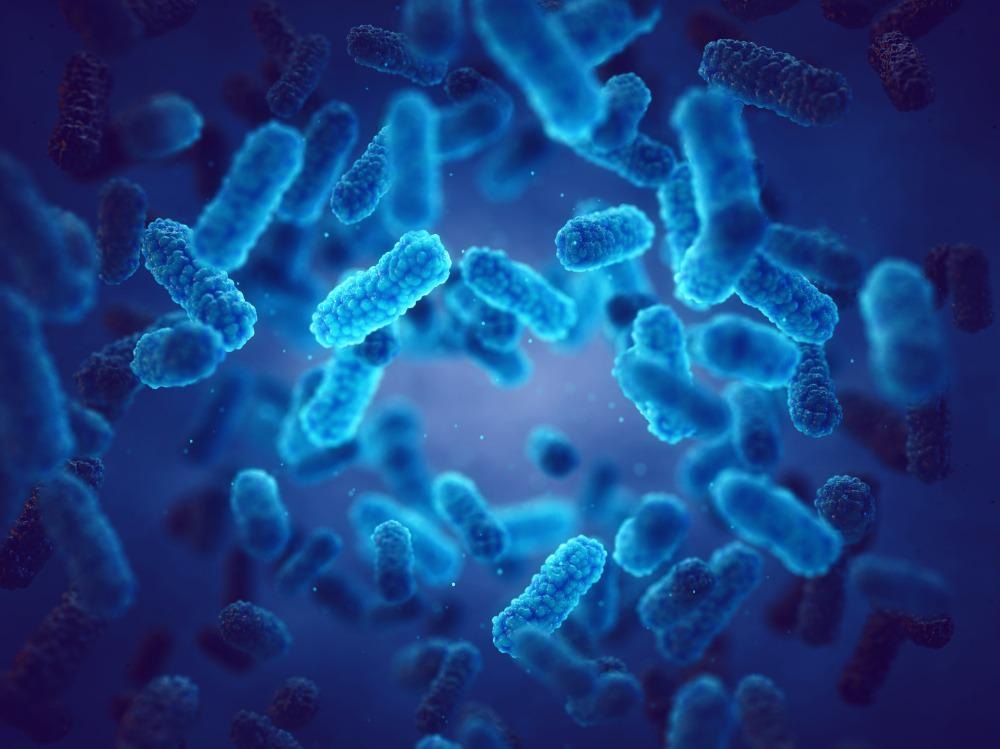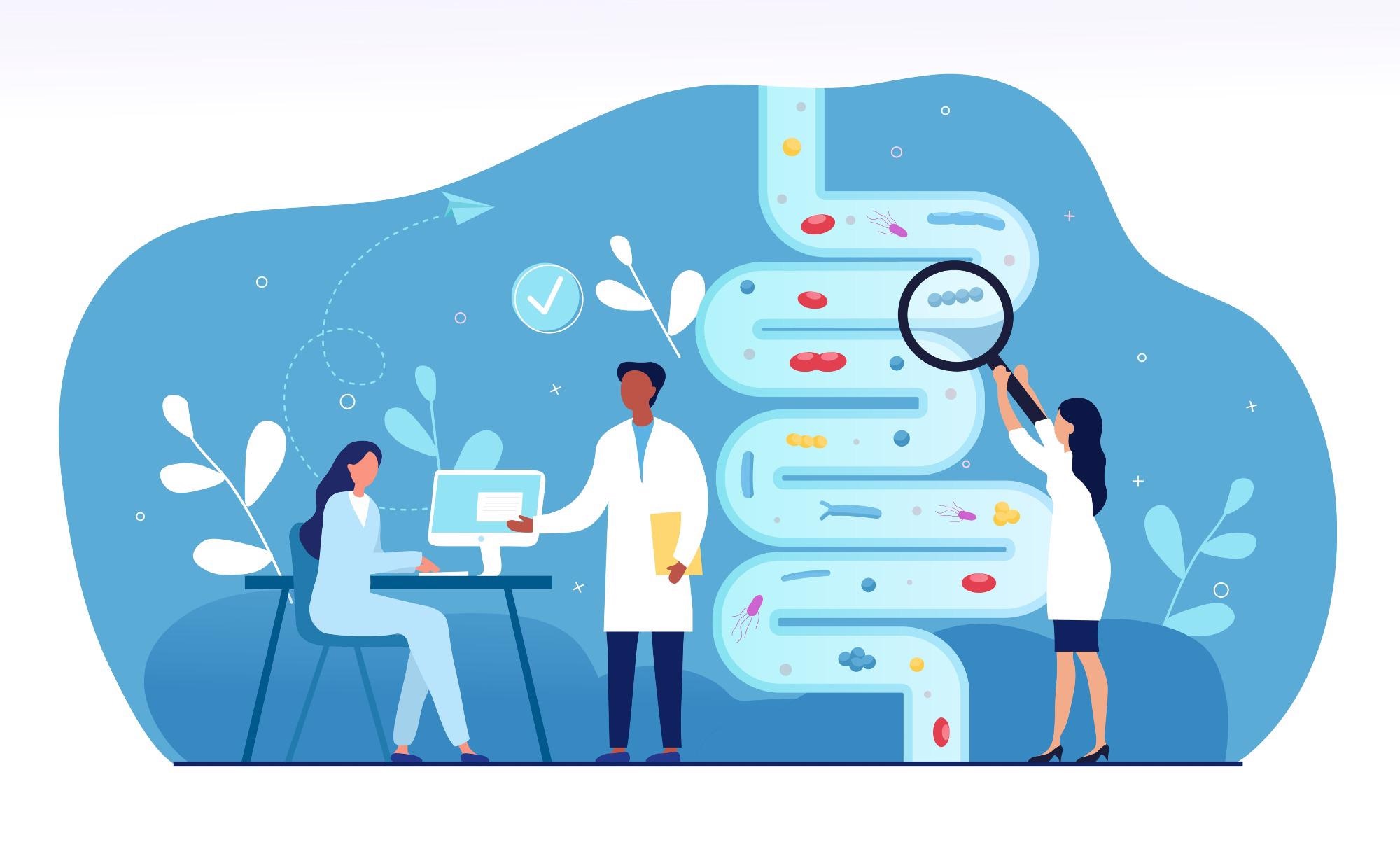The majority of microorganisms encountered by humans are considered to be ‘good.’ However, some of these microbes can cause disease. The bacterium Escherichia coli is a fundamental example of this. E coli is typically found in the intestines as a harmless commensal bacterium; however, pathogenic E coli strains can cause a wide spectrum of diseases, ranging from diarrhea to hemolytic-uremic syndrome. As such, biochemists have questioned what makes compliant and symbiotic microbes ‘bad.’

Image Credit: nobeastsofierce/Shutterstock.com
The Difference Between ‘Good’ and ‘Bad’ Bacteria
In many cases, the fundamental differences between harmless microbes and those that are considered to be harmful, i.e., common pathogenic, can be attributed to genes encoded on mobile elements such as plasmids, transposons, or integrated phage genomes.
Through the analysis of these mobile genetic elements, knowledge of evolutionary history, particularly through the analysis of ribosomal RNA genes used for assessing the relationship among microbiomes across broad evolutionary distances, is possible.
What is Gut Dysbiosis?
The gut microbiota is one example of a site on the human body in which ‘good’ bacteria can turn ‘bad.’ Given their diverse function, maintaining a balance of gut microbiota is essential for intestinal homeostasis and health. Gut dysbiosis refers to an altered composition of the gut microbiota.
This altered composition results in functional changes in the microbial transcriptome, proteome, or metabolome, which results in ill effects in the host. Several types of intestinal and extraintestinal disorders are linked to dysbiosis, including inflammatory bowel disease, food allergies, asthma, diabetes, multiple sclerosis, obesity, autism, colorectal cancer, peritonitis, and infection.
Gut dysbiosis is attributed to shifts in the relative abundance of bacteria. The shifts can be caused because of dietary changes, immune deficiency, inflammation, exposure to antibiotics or toxins, or infection. Recent studies have demonstrated that perturbations in the microbiota may result in an exponential increase, or bloom, of otherwise low abundance and harmful bacteria that contribute to disease.
When gut homeostasis is maintained, these harmful bacteria are considered to be ‘good’ as they are not able to produce pathogenic effects at such a low threshold. In particular, enterobacterial blooms are commonly found in dysbiosis that involves inflammation of the gut.
Usually, gut bacteria and the host live in a commensal manner. However, gut bacteria can be potentially harmful when the ecosystem undergoes abnormal changes. In most cases, some ‘bad’ bacteria occupy niches in the human body. However, their low concentrations and symbiotic interrelationship with other bacterial species mean that they are not considered to be ‘bad.’ However, dysbiosis of the gut bacteria can cause ‘good’ bacteria to become ‘bad.’
A notable example of these is E. coli, which is non-pathogenic in healthy subjects and results in the development or exacerbation of chronic diseases in the intestine after genetic or environmental conditions are altered in the host. It is the production of virulence factors that enable them to persist in the gut.
Enterobacteriaceae include symbionts such as Escherichia coli, Klebsiella spp., and Proteus spp. They reside in the gut at low levels located close to the mucosal epithelium, as here, they have a relatively higher tolerance of oxygen, which is supplied from the epithelium. When the gut becomes inflamed, either by infection, chemically induced colitis, or host immune deficiency, this confers a growth advantage to the Enterobacteriaceae.
However, in some cases, the infection may result in a consequential bloom of a normally harmless pathogenic bacterial strain. This is observed in the case of adherent-invasive E. coli (AIEC); blooms appear to be a consequence, rather than a cause, of inflammation in intestinal bowel disease. Therefore, in the context of inflammation, normally harmless bacteria can become ‘bad.’
The Effect of Nutritional Changes on the ‘good’ to ‘bad’ Shift in Bacteria – Prebiotic Effect
Diet plays a key role in determining the composition of the gut microbiota. For example, a vegetarian diet is associated with reduced intestinal pH and increased production of short-chain fatty acids, which are thought to produce a wealth of benefits, including inhibiting the growth of pathogenic strains of E coli and other members of Enterobacteriaceae.
Prebiotics are non-digested food that stimulates the growth and/or activity of a community of microorganisms to improve the health condition of the host. They may be used as an alternative to probiotics – which are – that have been proven to have a large influence on the gut microbiota at the level of the individual strain and species.
Recently, artificial sweeteners have been shown to potentially turn healthy gut bacteria into pathogenic variants. Sugar substitutes such as saccharin and aspartame can cause bacteria such as E coli and E faecalis to become pathogenic. These pathogenic changes are associated with the formation of biofilms as well as increased adhesion and invasion of bacteria into the intestinal cells. The shifts are thought to lead to gut bacterial invasion into host cells, causing intestinal damage with subsequent infection, sepsis, and multiple organ failure.

Image Credit: mentalmind/Shutterstock.com
Antibiotics can Shift Commensal Bacteria to Pathogenic
The use of antibiotics during surgery is known to cause dysbiosis of the gut bacteria. For example, both antibiotic treatment and surgery cause toxin-mediated pseudomembranous colitis by Clostridium difficile, sepsis caused by E coli, E faecalis, and E faecium, as well as intra-abdominal abscess due to Bacteroidetes fragilis.
While most clonal lineages of Staphylococcus epidermidis are commensals, some globally spreading healthcare-associated and methicillin-resistant S. epidermidis (HA-MRSE) can arise. This occurs through the expression of an accessory genetic element, tarIJLM, that leads to the production of poly-ribitolphosphate (RboP), which is second, Staphylococcus aureus-type surface-exposed wall teichoic acid (WTA). RboP-WTA expressed by S. epidermidis can enhance attachment to the endothelium and results in an increased probability of host mortality. RboP-WTA can also engage in bacteriophage-mediated, inter-species exchange of methicillin resistance, colonization, and virulence factors. Hence, the expression alters the lifestyle of S. epidermidis from commensal to pathogenic.
The Effect of Virulence Factors and Horizontal Gene Transfer on Shifting ‘good’ Bacteria to ‘bad’
Bacteria are dependent on virulence factors, which are molecules that aid their survival while being able to undermine the host defenses. Certain strains of bacteria, for example, EHEC and O157 strains of E coli can produce the Shiga toxin produced by Shigella. When bacteria reach a critical mass, toxins secretion occurs as part of the pathogenic strategy. These toxins exit negative effects on the intestinal cells, causing symptoms such as fever, diarrhea, stomach cramps, and vomiting.
Studies in avian pathogenic Escherichia coli (APEC), which causes colibacillosis, demonstrate that horizontal gene transfer spreads pathogenicity factors to facilitate the development of infectious divergent clones. These clones arise from ubiquitous commensal gut bacteria, and these virulent strains are not united by a single virulence gene.
In conclusion, subtle changes in the environment can cause ‘good’ bacteria to go ‘bad.’ In the context of human health, these environmental shifts are typically caused by changes in the diet, illness, and use of antibiotics. These effects are mediated by gene expression and inter-species crosstalk, which enable the sharing of genetic elements that facilitate the transformation of the bacterial cell.
References:
- Shil A, Chichger H. (2021) Artificial Sweeteners Negatively Regulate Pathogenic Characteristics of Two Model Gut Bacteria, E. coli and E. faecalis. Int J Mol Sci. doi:10.3390/ijms22105228.
- Braun R. (2013) Breaking bad, bacteria-style. Sci Am. doi 10.1038/scientificamerican1213-18.
- Mageiros L, Méric G, Bayliss SC, et al. (2021) Genome evolution and the emergence of pathogenicity in avian Escherichia coli. Nat Commun. doi:10.1038/s41467-021-20988-w.
Further Reading
Last Updated: Dec 4, 2023